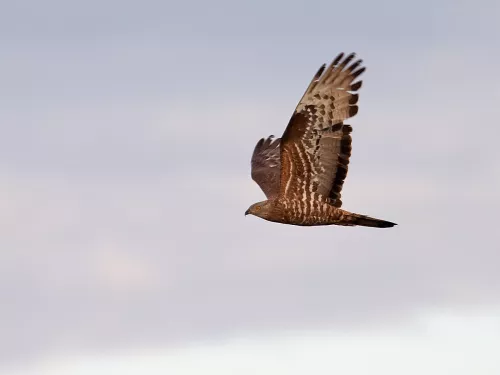
Honey buzzard
Rare summer visitors, honey buzzards breed in open woodland where they feed on the nests and larvae of bees and wasps.
Want to learn more about wildlife near you? You're in the right place, search below and discover the nature you can help protect in Kent.

Rare summer visitors, honey buzzards breed in open woodland where they feed on the nests and larvae of bees and wasps.
Ever spotted a honeycomb-like mound on the beach and wondered what it was? It's a reef built entirely by worms!
A true wildlife 'hotel', Honeysuckle is a climbing plant that caters for all kinds of wildlife: it provides nectar for insects, prey for bats, nest sites for birds and food for small mammals.

The hooded crow was thought to be the same species as the carrion crow, but they have now been separated. Less widespread than its cousin, look for it in North Scotland, Northern Ireland and the Isle of Man.
Well-known for its role in making beer, Hop is a climbing plant that can be seen in woodlands and along hedgerows and field edges. Its female flowers bear the cone-like fruit that is used in beer.
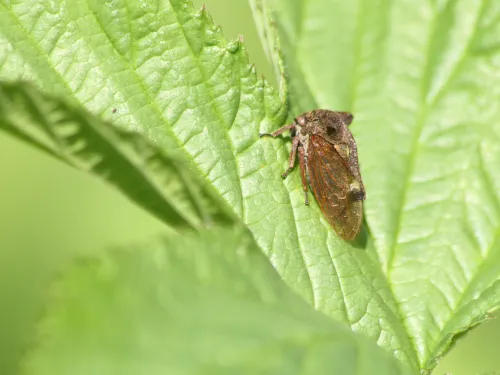
This bizarre bug can be found on plants in woodland rides and clearings.
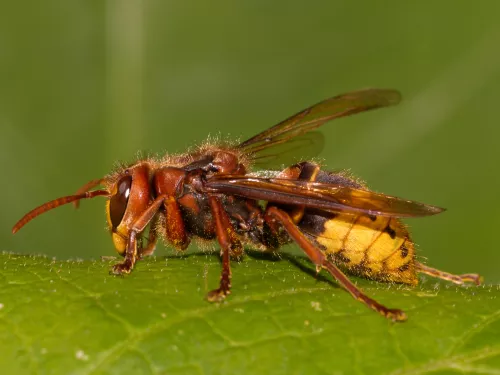
The fearsome-looking hornet may not be a well-loved insect, but it is actually much less aggressive than the common wasp. It is also an important pollinator and a predator of species that feed on plants and crops, so can be a gardener's friend.
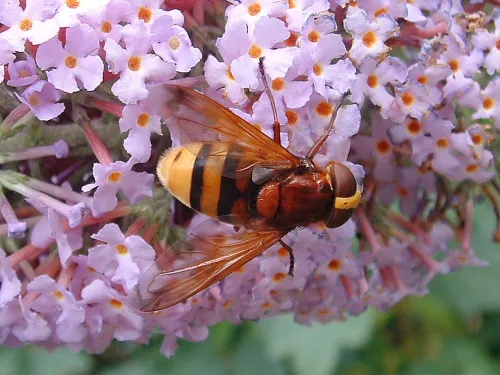
With black-and-yellow markings, the hornet mimic hoverfly looks like its namesake, but is harmless to us. This mimicry helps to protect it from predators while it searches for nectar.
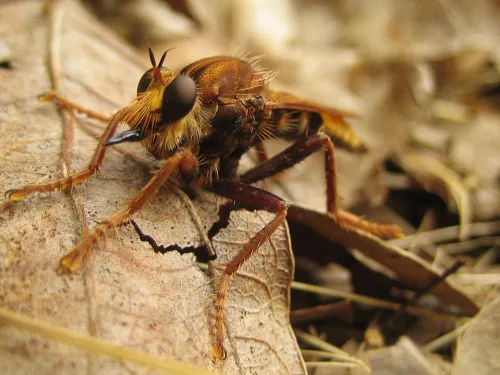
With black-and-yellow markings, the Hornet robberfly looks like its namesake, but is harmless to us. This mimicry helps to protect it from predators while it perches in the open, waiting for its own prey.
Hornwrack is often found washed up on our beaches, with many believing that it is dried seaweed. In fact, it is a colony of animals!
A tall, broad tree of woodlands, roadsides and parks, the introduced horse chestnut is familiar to many of us the 'conker' producing tree - its shiny, brown seeds appearing in their spiny cases in autumn.
Horsehair worms are parasitic worms of the clade Nematoida alongside their sister taxa Nematoda, the roundworms. The most famous trait of certain species of horsehair worms is the ability to alter the behaviour of grasshoppers and crickets to seek water, causing the host to drown itself to complete its lifecycle.